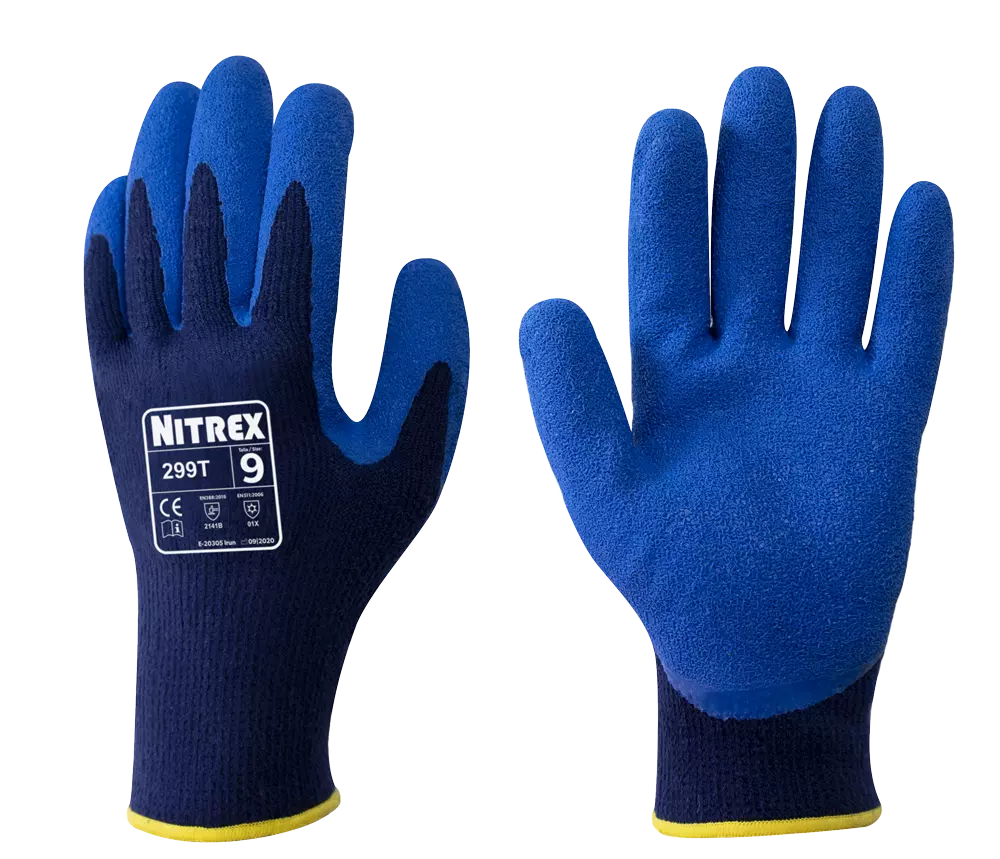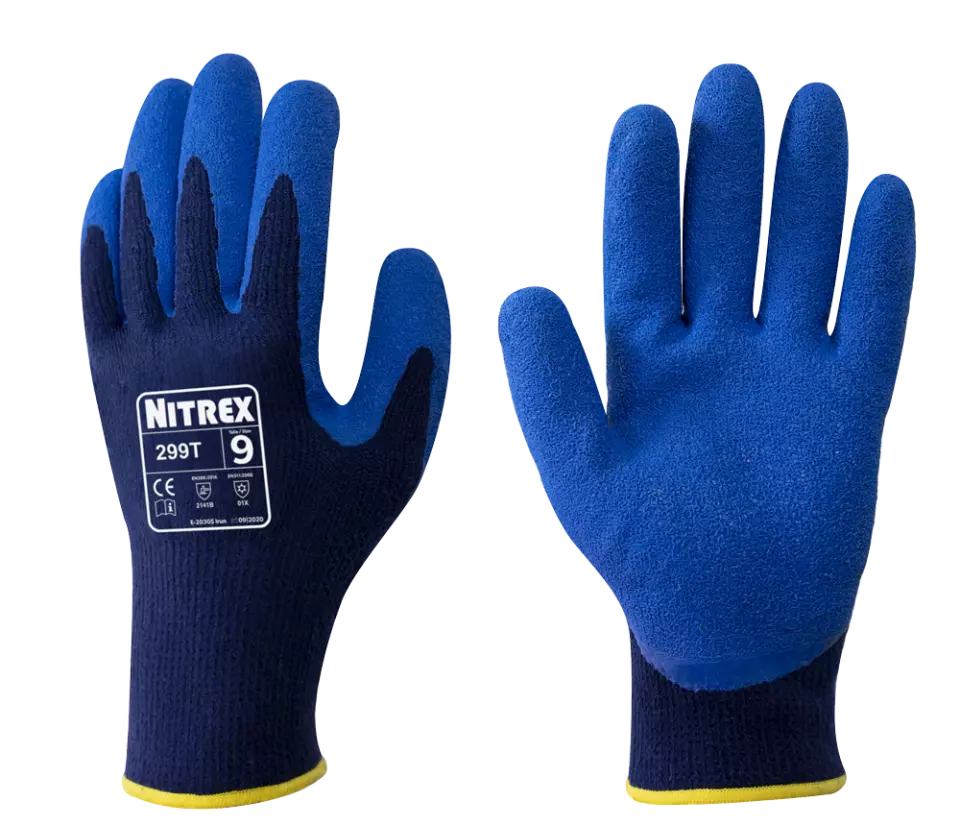
Features You'll Love

Palm Material · Latex
The material used on the palm side of the glove, affecting grip, durability, protection level, and comfort during use.

EN 388 · Abrasion Resistance Level 2, Tear Resistance Level 4, Puncture Resistance Level 1, Cut Resistance, ISO 13997 Level B
EN 511 · Cold Contact Level 1
Withstands moderate rubbing and friction, offering good protection for tasks involving handling rough materials.
Offers the highest level of protection against tearing, withstanding a strong force before ripping.
Provides basic protection against punctures from blunt objects like splinters, not sharp points like needles.
Offers low cut protection for general work, such as packaging and light assembly.
Provides light thermal insulation when directly handling cold objects. This offers basic protection for short or intermittent contact with cold surfaces, suitable for general tasks in cool conditions rather than prolonged exposure to extreme cold.
Nitrex
13gg blue acrylic latex glove, 10 pairs
13gg blue acrylic latex glove, 10 pairs
5 / 5
83,45 €
Price per 10 pairs
8,35 € / pair
Choose size
Shipping fee is 7,95 € for orders under 600,00 €
Features You'll Love

Palm Material · Latex
The material used on the palm side of the glove, affecting grip, durability, protection level, and comfort during use.

EN 388 · Abrasion Resistance Level 2, Tear Resistance Level 4, Puncture Resistance Level 1, Cut Resistance, ISO 13997 Level B
EN 511 · Cold Contact Level 1
Withstands moderate rubbing and friction, offering good protection for tasks involving handling rough materials.
Offers the highest level of protection against tearing, withstanding a strong force before ripping.
Provides basic protection against punctures from blunt objects like splinters, not sharp points like needles.
Offers low cut protection for general work, such as packaging and light assembly.
Provides light thermal insulation when directly handling cold objects. This offers basic protection for short or intermittent contact with cold surfaces, suitable for general tasks in cool conditions rather than prolonged exposure to extreme cold.
Product description
The product description has not been specified